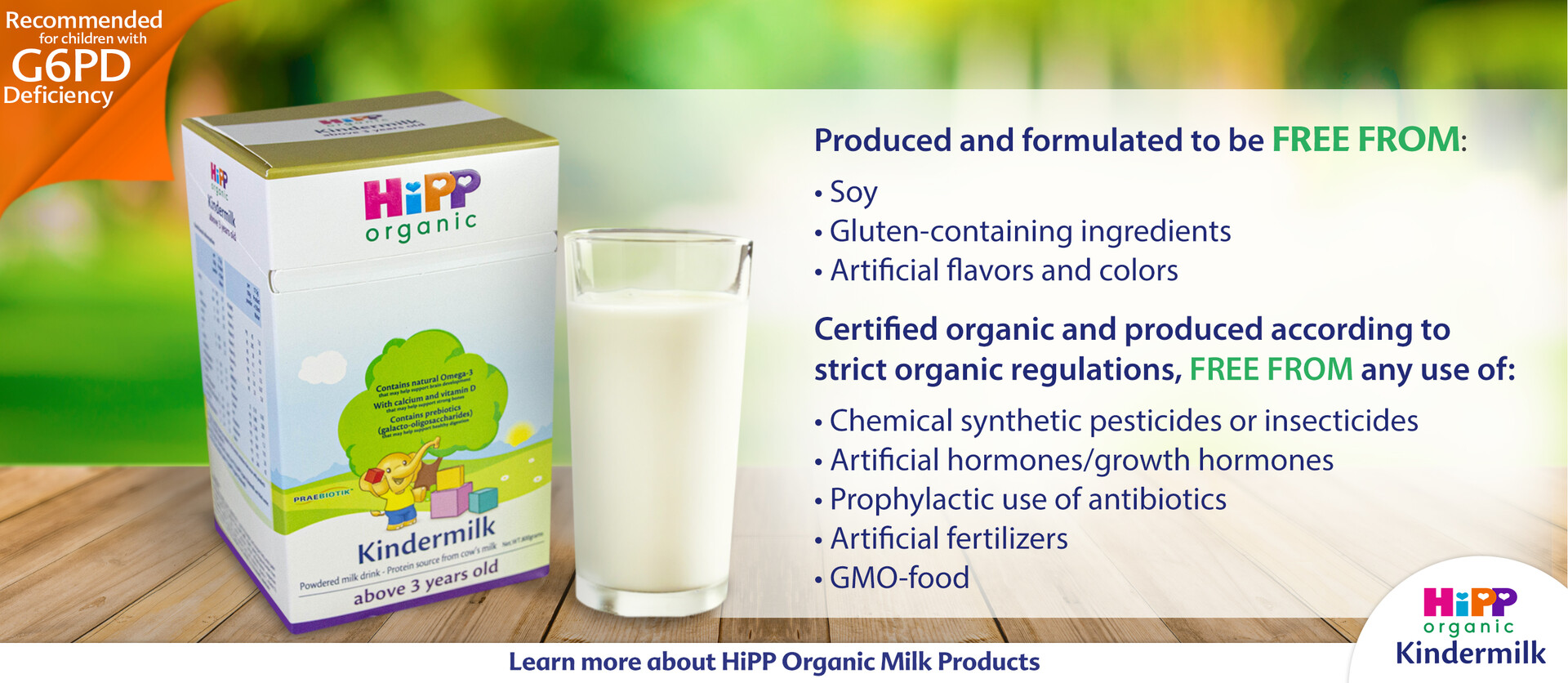
Signs & symptoms of a G6PD deficiency
Caring for your child's health is a top priority, and one condition that can affect their well-being is G6PD deficiency, a genetic disorder that impacts the red blood cells.
Understanding the signs and symptoms of G6PD deficiency is crucial for safeguarding your child's health and ensuring they receive the appropriate care. In this article, we will explore the key indicators of G6PD deficiency, providing you with valuable insights to protect and support your child's well-being.
MEDICAL DISCLAIMER: The information included in this material is for informational purposes only. Always seek medical advice for any concerns about health and nutrition.
G6PD Deficiency: What is it?
G6PD deficiency is a genetic condition that affects red blood cells that carry oxygen to all parts of the body. Exposure to specific triggers may cause these cells to break down and cause anemia.
While G6PD is a genetic condition, not everyone with G6PD deficiency is affected in the same way. Some people may be affected mildly which can be managed, while others may have severe symptoms that require hospital care.
Symptoms in children and adults
- Pale skin: One of the prominent signs of G6PD deficiency, pale or unusually light skin color can be a result of decreased red blood cell production, which impacts oxygen delivery throughout the body.
- Extreme tiredness: Fatigue and weakness are common symptoms due to the decreased lifespan of red blood cells in individuals with G6PD deficiency, leading to reduced oxygen transport.
- Fast heartbeat: An increased heart rate can occur as the body attempts to compensate for decreased oxygen levels in the blood.
- Fast breathing or shortness of breath: These symptoms can manifest due to the body's efforts to enhance oxygen intake and counteract the effects of anemia associated with G6PD deficiency.
- Yellow skin and eyes/Jaundice: Jaundice is a visible indicator of increased breakdown of red blood cells and can lead to yellowing of the skin and the whites of the eyes.
- Dark urine: Dark urine can result from the presence of excess bilirubin, a pigment formed during the breakdown of red blood cells, and it can be an early sign of G6PD deficiency-related complications.
Common Triggers:
- Foods: Fava beans, soy products, red wines, legumes, or tonic water
- Chemicals: Naphthalene
- Antibiotics: Sulfonamides, Co-trimoxazole
- Other Medications: Aspirin, Large doses of Vitamin C
G6PD deficiency without symptoms
While asymptomatic G6PD deficiency may not pose immediate health concerns, individuals with this condition should still be aware of their genetic status and potential triggers. It's essential to consult with your doctor and be cautious when it comes to medications, foods, and environmental exposures that could potentially cause oxidative stress and lead to symptoms.
To manage G6PD deficiency, it's essential to steer clear of known triggers and maintain open communication with healthcare providers to ensure safe medication choices when needed. Being cautious with certain foods and supplements is also important.
For a more in-depth look at G6PD deficiency and how to manage it, visit our article on Helpful tips for the management of G6PD deficiency.
Frequently asked questions on g6pd deficiency symptoms:
What are the symptoms of G6PD deficiency?
Common symptoms of G6PD deficiency include pale skin, extreme tiredness, a fast heartbeat, rapid breathing or shortness of breath, yellowing of the skin and eyes (jaundice), and dark urine.
How common is G6PD deficiency?
G6PD deficiency is a relatively common genetic disorder. The risk of G6PD deficiency in children is influenced by the genetic background of both parents. In some populations, the prevalence of G6PD deficiency in newborns can be relatively high, whereas in others, it may be quite rare. Screening for G6PD deficiency is often performed in newborns, particularly in high-risk regions, to identify affected children early.
How is G6PD deficiency inherited?
G6PD deficiency is an X-linked genetic disorder, which means it is inherited in a manner that depends on a person's sex chromosomes.
If a carrier female (heterozygous for G6PD deficiency) has children, there is a 50% chance of passing the G6PD deficiency allele to her offspring, regardless of the child's sex. Whether the child experiences symptoms depends on the presence of other factors and triggers.
How serious is G6PD deficiency?
The severity of G6PD deficiency can vary widely among individuals. The condition can be managed by avoiding triggers, maintaining a healthy lifestyle, and medical guidance to minimize the risks associated with this genetic disorder.
MEDICAL DISCLAIMER: The information included in this material is for informational purposes only. Always seek medical advice for any concerns about health and nutrition.
References
[1] Tripathi, M. and Shrivastava, R. (2017). Processing and Utilization of Soy Food By‐Products. pp.231–276. doi:https://doi.org/10.1002/9781118432921.ch11
[2] Ponder, D.L., Innis, S.M., Benson, J.D. and Siegman, J.S. (1992). Docosahexaenoic Acid Status of Term Infants Fed Breast Milk or Infant Formula Containing Soy Oil or Corn Oil. Pediatric Research, 32(6), pp.683–687. doi:https://doi.org/10.1203/00006450-199212000-00012
[3] Castejon, L.V., Almeida, E.S., Cardoso, V.S., dos Santos, K.G. and Finzer, J.R.D. (2017). Characteristics of the Milk Powder Particles Lecithinated. Materials Science Forum, 899, pp.167–172. doi:https://doi.org/10.4028/www.scientific.net/msf.899.167
[4] Stuhrman, G., Perez Juanazo, S.J., Crivelly, K., Smith, J., Andersson, H. and Morava, E. (2017). False-Positive Newborn Screen Using the Beutler Spot Assay for Galactosemia in Glucose-6-Phosphate Dehydrogenase Deficiency. JIMD Reports, [online] pp.1–5. doi:https://doi.org/10.1007/8904_2016_34
[5] National Institutes of Health-Philippines. (2017). Glucose-6-Phosphate Dehydrogenase Deficiency [Brochure].
[6] Mayo Clinic. (2018). Allergies - Symptoms and causes. [online] Available at: www.mayoclinic.org/diseases-conditions/allergies/symptoms-causes/syc-20351497
Chat with us on Messenger at m.me/hipp.ph



